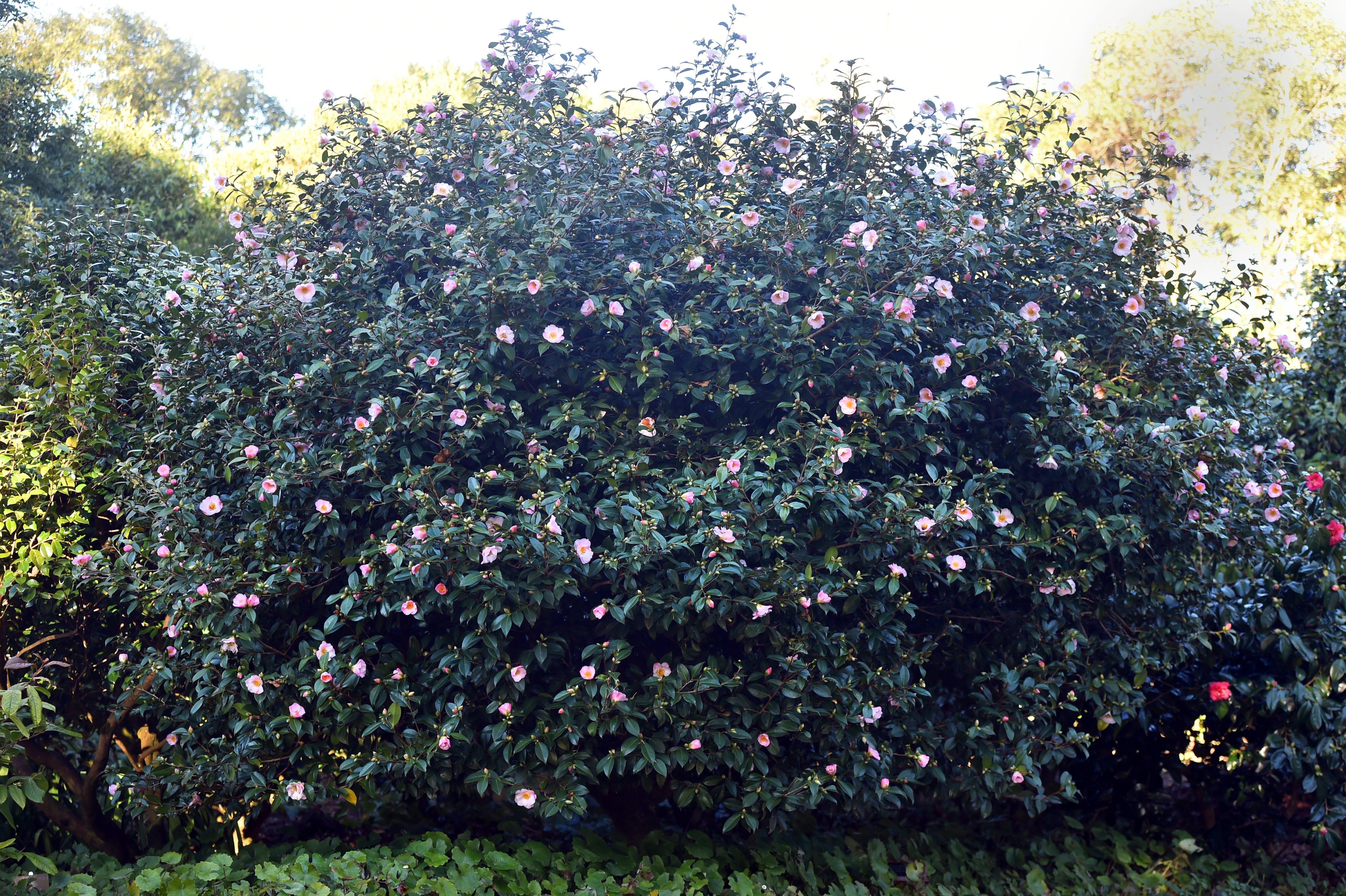
Camellias have adventitious buds. These dormant buds are often invisible until stimulated into growth through pruning and are a great survival technique. Adventitious buds from old mature stems can help camellias replace lost or damaged limbs or even regrow from a stump.
Most plants grow fastest at their uppermost tips, where hormones stimulate active growth. When these apical or top dominant buds are pruned back, it encourages lower branches to break into growth. Voila! The result is a bushier plant.
For dense camellias, removing poor branches entirely creates an open elegant structure. With space for air movement and dappled sunshine you have a healthier plant with a beautiful three-dimensional flowering instead of flowers just on the outside dripline.
Coppicing is a last resort which involves reducing a shrub or tree close to the ground. This can be a fast solution for a plant which has completely outgrown its space or been severely damaged. Camellias tolerate coppicing and respond well.
The lower garden camellias in the collection are pruned each year on a careful rotation, and yes, we do take full advantage of their adventitious buds!
— Marianne Groothuis is the camellia collection curator at the Dunedin Botanic Garden













